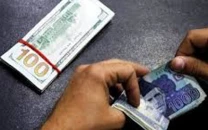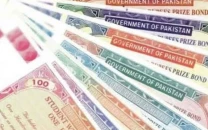CIO Pakistan: IT Industry, an answer to the energy crisis
An out of box solution has become an urgent need of the hour to deal with unprecedented energy shortage in Pakistan.

The demand for natural gas and oil demand has increased manifold, likely to burden the economy further as a result of growing Middle East crisis. The government has planned major initiatives including three gas import pipelines, Gwadar port as energy hub and LNG import to meet energy shortage.
Pakistan’s economic growth is heavily reliant on its textile industry, contributing over $10 billion annually in terms of foreign exchange by consuming total cotton crop of the country. During last fiscal year, the textile industry exports have contributed $14 billion in country’s total exports of $25 billion. But it is also true that textile industry is losing 30% of the production due to prevailing energy shortage. Installation of Captive Power Plants (CPPs) by the spinning industry has also failed to deliver desired results, as availability of gas as a cheap fuel for these CPPs is becoming a question mark with every passing day. The textile industry was already denied Sui gas for over 100 days during the last fiscal. It is also for the first time in the history that the SNGPL has cut the supply to the textile industry during summer this year. Textile industry has yet to witness the worst in coming winter. The government is fully attentive to the fact and trying its level best to ensure uninterrupted electricity and gas to the industry. Especially, President Asif Ali Zardari has been very vigilant to the situation, which is highly appreciable act on his part.
An out of box solution has become an urgent need of the hour to deal with unprecedented energy shortage in the country, creating a deep dent in national economy since November 2007. Chances of meeting energy shortage in near future are dismal, at least for another seven years. This is therefore right time to re-evaluate the potential of various segments of economy in order to reshuffle the priorities in a highly emergent situation like this. The government policymakers should consider diversification of economic model and start thinking beyond traditional economic areas like textile industry. An extraordinary dependence on textile and agriculture since independence is losing country’s competitive edge fast, which is compounded by the prevailing energy crisis. Unfortunately, all the trade policies are entirely focused on textile industry, which is highly power-intensive and present energy shortage has resulted into massive unemployment.
Unlike India, Pakistan’s IT sector consists of a web of small firms and many of the entrepreneurs started from very low levels to make entry in the business.The industry revenues are exceeding $2 billion a year and are projected to reach $11 billion by 2016, according to Pakistan Software Houses Association (P@SHA). Many firms are seeing their sales grow at an annual rate of over 30%. This target can be achieved much earlier than 2016 provided the government is supportive the growth of IT industry. Pakistan has been able to achieve these growth rates despite ranking 120th on the infrastructure and logistics components of the World Bank’s Logistics Performance Index.
The Pakistan Software Export Board (PSEB) has recently been quoted in the press that Pakistan is producing around 25,000 IT professionals every year to meet growing requirement of domestic and international markets. Out of total number of such professionals, approximately 50 per cent enter the job market, according to the data. At present, an estimated 150,000 IT professionals are available in Pakistan against around 3 million IT engineers in India. However, the current pool of IT experts and engineers available in the country is not sufficient to meet the domestic requirements. To achieve targeted results, the government needs to take several steps to increase the number of IT experts and engineers with a focus on the growth of skilled human resource pool for the country’s IT industry. The best way to achieve growth in IT sector of Pakistan is to follow the Indian model.
A shift in government focus towards the IT industry may ease down pressure on the economic growth of the country. The IT industry is not as energy-intensive as the textile is. It is important to note that the IT industry in Pakistan is not as power-intensive as the textile is. The IT firms in Pakistan have not closed their operations even for a single day due to power shortfall as the computer machines are not as power intensive as the spinning looms are.
India’s software and services exports have been rising rapidly. The annual growth rate is around 45% in IT services and nearly 55% in IT-enabled services (ITES), such as call centres, Business Process outsourcing (BPO) and other administrative support operations. Together they are grown to 25% per annum. Despite the fact that Indian share in the world market for information technology services is yet very negligible, this sector has been growing at a scorching pace, helped by a large pool of English speaking workers, nearly 3 million engineers and the increasing tribe of tech-savvy entrepreneurs in the country. The information Technology industry currently account for 7% of India’s GDP. Software service exports in India increased from US$0.50 million in 1990 to $5.9 billion in 2000-01 to 23.6 billion dollars in 2005-06 recording a 34% growth with a compound annual growth of over 25% per annum until 2010. The impact of software and IT enabled service exports of around $60 billion on the economy is likely to be profound. One manifestation is that India notched up a current account surplus in 2001-02 for the first time in 24 years.
Having a strong Pakistan IT industry is very much possible with concerted efforts on the part of the government, and host of other factors like private initiatives, emergence of software technology parks, clustering and public private partnerships. India formulated the national vision to promote software industry in India in the early 1980s and took its IT industry exports to $60 billion in 20 years. Pakistan IT industry has a potential higher than Indian IT industry and earn more foreign exchange in next 20 years provided the required focus of the government is there.
(The writer is Chairman and CEO NetSol Technologies, Honourary Consul of Australia for the province of Punjab, Pakistan and former Co-Chairman of Federal Government’s Task Force on Information & Communication Technologies)
This article was originally published on CIO Pakistan here.



















COMMENTS
Comments are moderated and generally will be posted if they are on-topic and not abusive.
For more information, please see our Comments FAQ